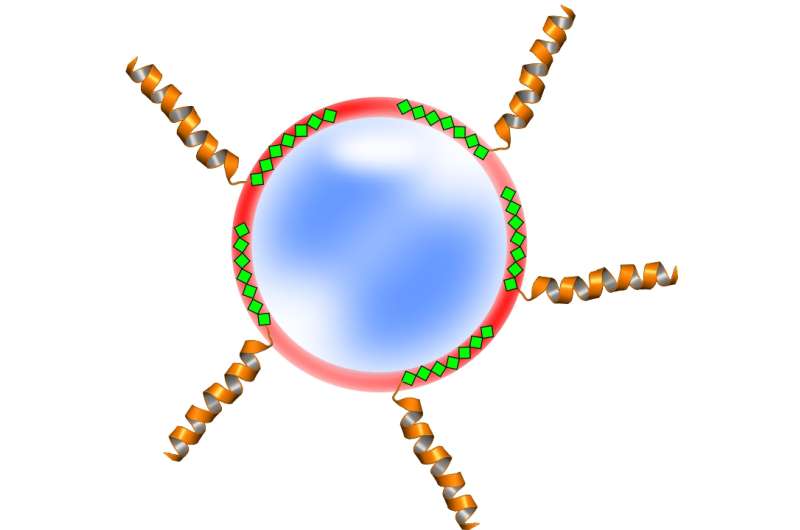Happily ever after: Scientists arrange protein-nanoparticle marriage

Fastening protein-based medical treatments to nanoparticles isn't easy. With arduous chemistry, scientists can do it. But like a doomed marriage, the fragile binding that holds them together often separates.
This problem, which has limited how doctors can use proteins to treat serious disease, may soon change.
University at Buffalo researchers have discovered a way to easily and effectively fasten proteins to nanoparticles - essentially an arranged marriage - by simply mixing them together. The biotechnology, described April 20 online in the journal Nature Chemistry, is in its infancy. But it already has shown promise for developing an HIV vaccine and as a way to target cancer cells.
"Scientists have been able to attach proteins to nanoparticles for a while now. But it's a fairly difficult process that's only effective in a controlled environment. Nobody has been able to devise a simple method that can work inside the body," said Jonathan F. Lovell, PhD, UB assistant professor of biomedical engineering, who led the research.
He added: "We have proven that you can easily attach proteins to nanoparticles and, like Velcro that doesn't unstick, it stays together."
Additional authors include researchers from UB's Department of Chemical and Biological Engineering and Department of Microbiology and Immunology.
To create the biotechnology, the researchers use nanoparticles made of chlorophyll (a natural pigment), phospholipid (a fat similar to vegetable oil) and cobalt (a metal often used to prepare magnetic, water-resistant and high-strength alloys).
The proteins, meanwhile, are modified with a chain of amino acids called a polyhistidine-tag. Uncommon in medicine, polyhistidine-tags are used extensively in protein research.
Next, the researchers mixed the modified proteins and nanoparticles in water. There, one end of the protein embeds into the nanoparticle's outer layer while the rest of it sticks out like a tentacle.
To test the new binding model's usefulness, the researchers added to it an adjuvant, which is an immunological agent used to enhance the efficacy of vaccines and drug treatments. The results were impressive. The three parts - adjuvant, protein and nanoparticle - worked together to stimulate an immune response against HIV.
The researchers also tested proteins that target cancer cells. Again, the results were exciting, with the new binding model acting like a homing missile to tumors. The targeted nanoparticles have the potential to improve cancer treatment by targeting specific cancer cells in lieu of releasing anti-cancer drugs everywhere in the body.
Lovell plans to follow up the research with more rigorous testing of the vaccine and tumor-targeted technologies. Moving to human clinical trials is the ultimate goal.
More information: Functionalization of cobalt porphyrin-phospholipid bilayers with his-tagged ligands and antigens, DOI: 10.1038/nchem.2236
Journal information: Nature Chemistry
Provided by University at Buffalo



















